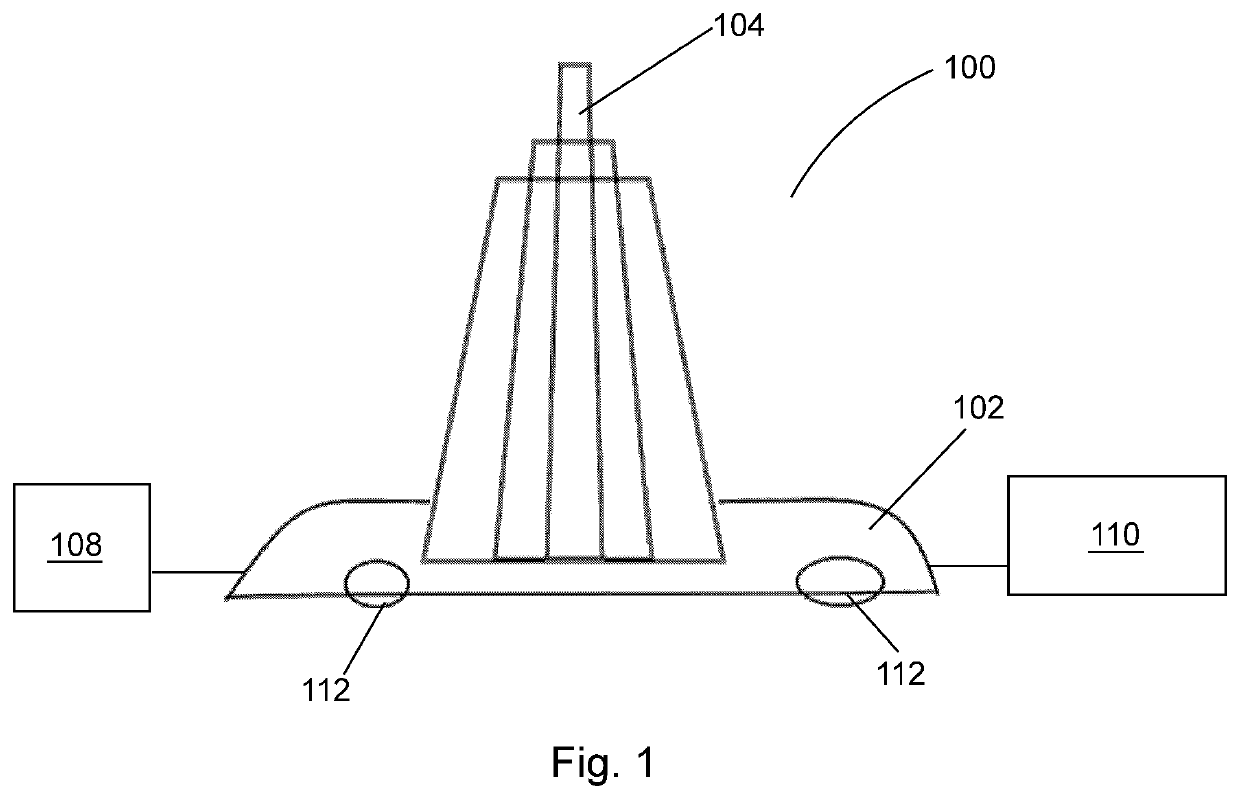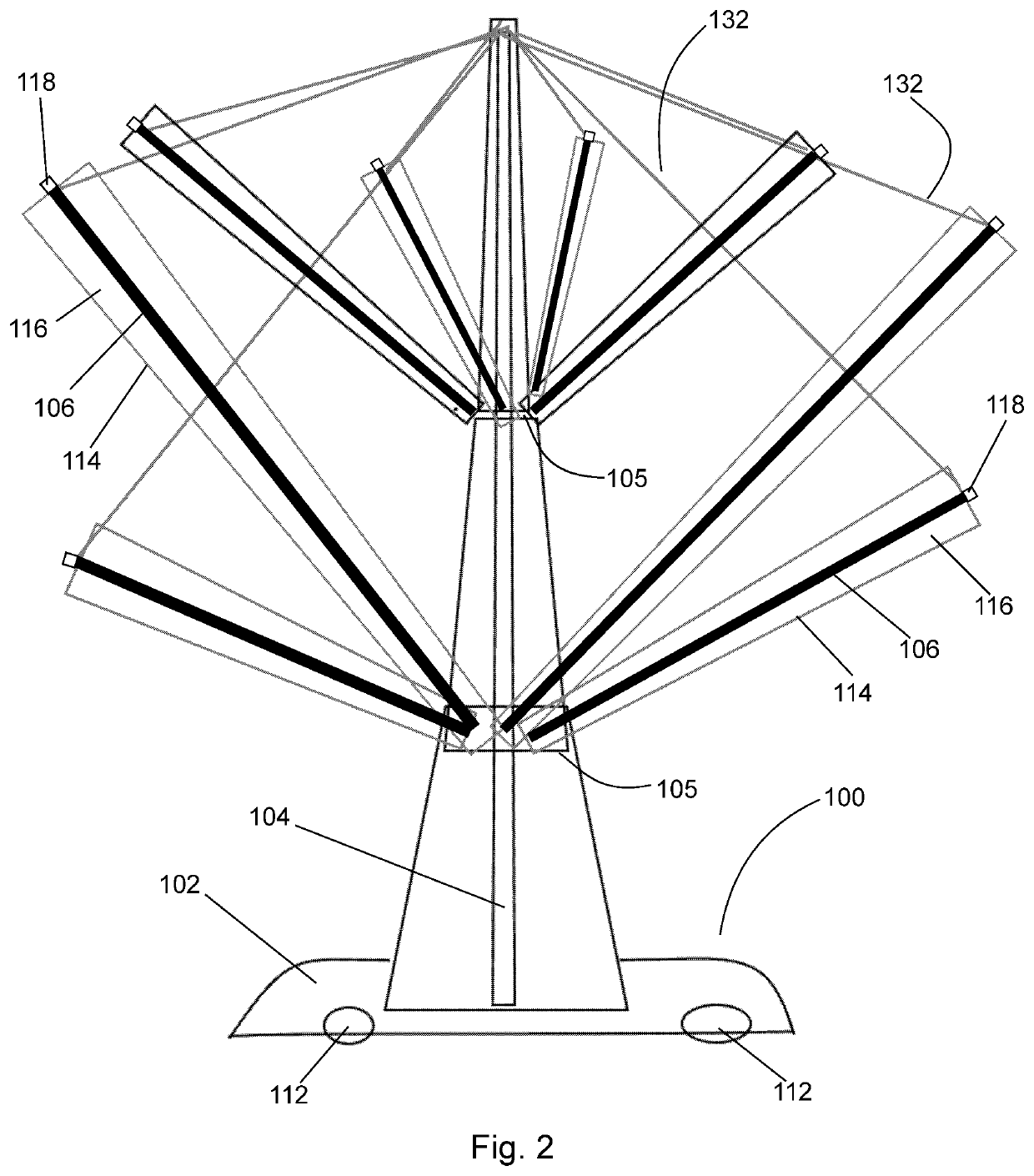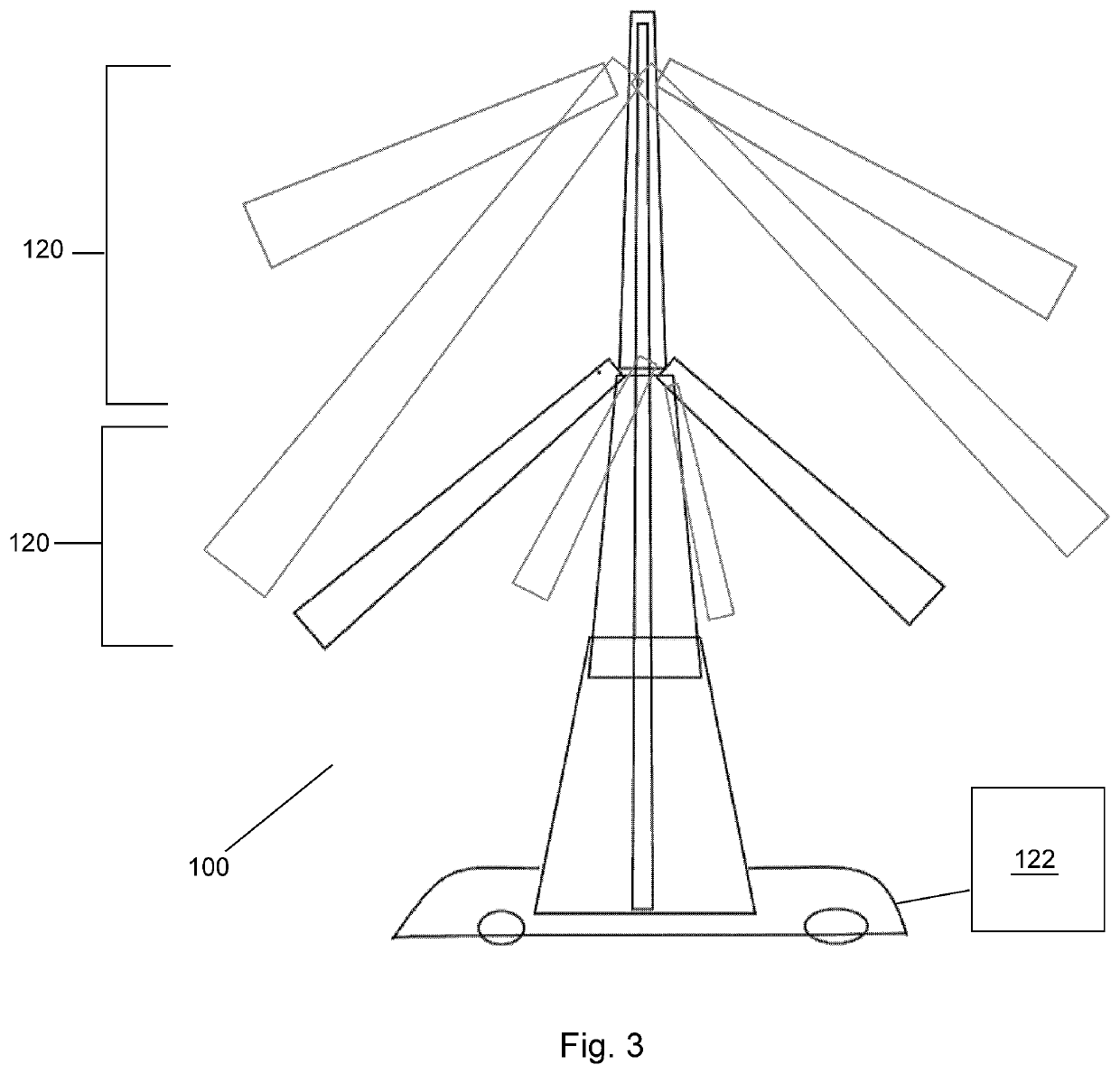Dynamic building-integrated photovoltaics (dbipv) using solar trees and solar sails and the like
a photovoltaic and solar energy technology, applied in the direction of wind motors with solar radiation, acceleration measurement in multiple dimensions, machines/engines, etc., can solve the problems of increasing the amount of co2 in the atmosphere, destroying trees and plants, and affecting the environment, so as to maximize the efficiency of pv panels
- Summary
- Abstract
- Description
- Claims
- Application Information
AI Technical Summary
Benefits of technology
Problems solved by technology
Method used
Image
Examples
Embodiment Construction
[0127]The following detailed description should be read with reference to the drawings. The drawings, which are not to scale, depict illustrative embodiments and are not intended to limit the scope of the invention.
[0128]Referring to FIGS. 1 to 9, in accordance with one embodiment of the invention, a mobile solar tree 100 comprises a solar tree base 102 and a solar tree trunk 104 extending from the solar tree base 102. In one embodiment, the solar tree trunk 104 may extend substantially perpendicularly from the solar tree base 102. One or more solar tree branches 106 are connected to the solar tree trunk 104. Preferably, the solar tree branches 106 are hingedly or pivotably connected to the solar tree trunk 104 such that they may be actuated with respect to the solar tree trunk 104. In the embodiment shown in FIGS. 1 to 3, the solar tree trunk 104 comprises one or more horizontal bars 105 for attachment of the solar tree branches 106. For example, the solar tree branches 106 may be ...
PUM
| Property | Measurement | Unit |
|---|---|---|
| angle | aaaaa | aaaaa |
| angle | aaaaa | aaaaa |
| angle | aaaaa | aaaaa |
Abstract
Description
Claims
Application Information
 Login to View More
Login to View More - R&D
- Intellectual Property
- Life Sciences
- Materials
- Tech Scout
- Unparalleled Data Quality
- Higher Quality Content
- 60% Fewer Hallucinations
Browse by: Latest US Patents, China's latest patents, Technical Efficacy Thesaurus, Application Domain, Technology Topic, Popular Technical Reports.
© 2025 PatSnap. All rights reserved.Legal|Privacy policy|Modern Slavery Act Transparency Statement|Sitemap|About US| Contact US: help@patsnap.com



